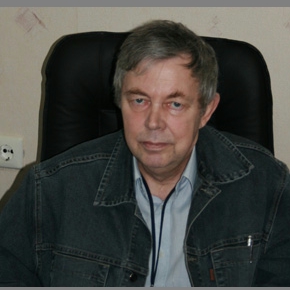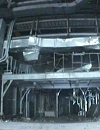Missile-defense is among the most discussed issues on the Russian-U.S. agenda, its prominence primarily explained by Washington's insistence on deploying forward-based missile-defense units, elements of a strategic missile-defense system, not far from Russian borders.
Military analysts believe this could impair the effective combat use of Russia's strategic nuclear arms. A meeting among the defense ministers of the NATO-Russia Council (NRC) that began in Brussels on June 8 plans to devote its energies precisely to this issue.
Yet this sufficiently complicated debate cannot be resolved quickly. The United States continues to assert its commitment to the joint development of missile-defense systems with Russia, but refuses to give legally sealed guarantees that such systems will not be directed against its potential collaborator.
Russia and the United States continue to negotiate in a mood of mutual distrust. Moscow fears that its strategic nuclear forces will be weakened. Washington and its European partners prefer to rely solely on their own armed forces under Article 5 of the North Atlantic Treaty.
It is possible to escape the current impasse if the following measures are implemented in the near future.
Meeting halfway
First of all, a joint center for the exchange of data from early-warning systems.
should be opened in Moscow under the May 2002 Joint Declaration on a New Relationship Between the United States and Russia.
The online center should function as the first early-warning link between the United States/NATO and Russia. Additional centers could be opened in the United States and Europe.
Second, Russia, the United States, and NATO should continue to hold joint computerized exercises on theater-level missile-defense systems. Substantial positive experience has already been accumulated in this field.
Prominent military analyst Vladimir Dvorkin says that five Russian-U.S. computerized exercises in this sphere were conducted between 1996 and 2006. Four more exercises involving Russia, the United States, and NATO were held between 2003 and 2008 in Colorado, the Netherlands, Moscow, and Munich.
Third, Russia and the United States should consider the possibility of holding a joint exercise to intercept a high-speed ballistic target. The exercise should involve Russia's S-300 PMU-1/SA-20A Gargoyle and S-400 Triumf/SA-21 Growler surface-to-air missiles, as well as the U.S. Army Patriot PAC-2 missiles. The exercise could take place, for instance, at the Ashuluk firing range in Russia's Astrakhan Region.
Although this is not enough to facilitate more partner-like Russian-U.S. relations in the sphere of missile defense, the implementation of such measures would promote mutual trust and also make it possible to discuss the crucial issue of the interoperability of national missile-defense systems.
It is clear that the United States will be unable to delay the creation of a European missile-defense system due to domestic policy considerations and its previous obligations to NATO.
This is intensified by the fact that Iran rapidly continues to increase its missile potential and has voiced an ominously vague stance on the true objectives of its national nuclear program. Iranian specialists are currently developing the two-stage solid-propellant Sajil missile with a maximum range of 2,200 kilometers. The missile carries a warhead weighing one metric ton and can also be fitted with a 500-kg warhead, increasing its range to 3,000 km.
Missiles of this type may present a threat to southern Russia, including the Volgograd Region and some European states. Iran may be capable of using such missiles as early as two to three years from now. Consequently, the creation of a joint missile-defense system in the foreseeable future reflects common Russian-NATO interests. The interoperability of the system's elements is just the first step in this direction.
Adding to the incentives for such cooperation are the convenient locations of Russian radar systems in Gabala, Azerbaijan, and near Armavir in the North Caucasus.
In 2009, the administration of U.S. President Barack Obama renounced the creation of a space-based missile-defense system and limited ground-based missile-defense systems to 30 ground-based interceptors in California and Alaska. The system also has eight reserve GBIs.
The United States plans to deploy ten SM-3 Block 2B ground-based missile interceptors in Poland by 2018 in order to intercept intercontinental ballistic missiles (ICBMs) and submarine-launched ballistic missiles (SLBMs).
Moreover, the United States has launched the serial production of SM-1 interceptors and plans to deploy six ground batteries of the Terminal High Altitude Area Defense (THAAD) missile system, as well as the 24 SM-3 Block 2A missiles of the ground-based Aegis Ashore system, in Romania. All these missiles are designed to intercept short-range and medium-range ballistic missiles.
Russia wields the A-135 ballistic missile-defense system around Moscow. This system makes it possible to neutralize a limited nuclear strike during its final approach, yet it is virtually impossible to include in a joint missile-defense system.
The operational S-400 missiles with a maximum intercept altitude of not more than 30 km and the more advanced S-500 missiles, whose specifications will hardly exceed those of the THAAD system, are unable to hit high targets. All this seriously limits Russia's potential for joining the European missile-defense system.
The southern front
Russia's dilemma could be solved by placing missile-defense units in the Southern Federal District. It would thus become possible to create a regional European missile-defense system, as proposed by President Dmitry Medvedev at the November 2010 Russia-NATO summit in Lisbon.
Considering possible launch trajectories from an Iranian missile base near Isfahan, it would be most appropriate to deploy Russian missile interceptors near Rostov-on-Don and guide them to their targets with the help of cutting-edge radar near Armavir, thus shielding Russia from medium-range Iranian missiles.
Russia's scientific and production potential makes it possible to promptly design and deploy missile interceptors with a 200-300 km intercept altitude and conventional warheads for dealing kinetic strikes in the case of direct hits or fragmentary strikes in order to destroy ballistic targets.
Such missile interceptors should obviously be deployed on mobile launchers, and their initial number should be limited to 16 - the size of a standard air-defense missile brigade.
In this sense, however, it is possible to establish a joint Russian-European missile-defense system only in an as yet indefinite future.
In order to do so, Russia, the United States, and Washington's European allies first have to improve their mutual trust. This can be accomplished through data exchanges and joint exercises. If Moscow deploys missile-defense units in southern Russia, then it will become necessary to facilitate the interoperability of the new Russian system and a similar system in Romania, to say the least. In effect, this will become the first step on the road to creating a joint European missile-defense system.
Rosatom will no longer be required to get a special license from the U.S. Department of Commerce to cooperate with American companies.
Element 114 was first synthesized in December 1998 by bombarding plutonium nuclei with calcium nuclei, which have 94 and 20 protons respectively.
Russia is to decommission and dismantle 42 nuclear facilities by 2015 and 188 by 2020, Rosatom department head Yevgeny Komarov said.



